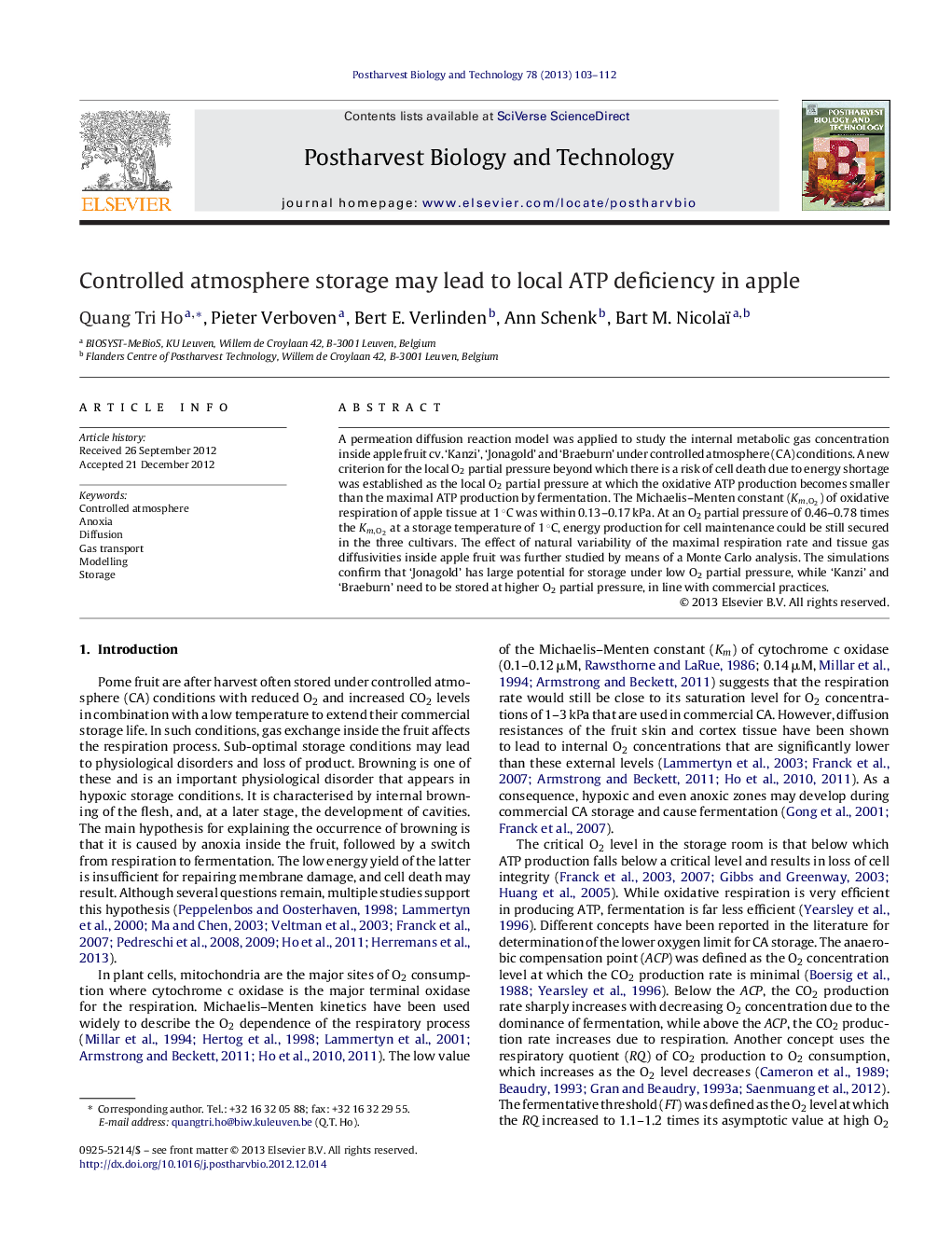| Article ID | Journal | Published Year | Pages | File Type |
|---|---|---|---|---|
| 4518490 | Postharvest Biology and Technology | 2013 | 10 Pages |
A permeation diffusion reaction model was applied to study the internal metabolic gas concentration inside apple fruit cv. ‘Kanzi’, ‘Jonagold’ and ‘Braeburn’ under controlled atmosphere (CA) conditions. A new criterion for the local O2 partial pressure beyond which there is a risk of cell death due to energy shortage was established as the local O2 partial pressure at which the oxidative ATP production becomes smaller than the maximal ATP production by fermentation. The Michaelis–Menten constant (Km,O2)(Km,O2) of oxidative respiration of apple tissue at 1 °C was within 0.13–0.17 kPa. At an O2 partial pressure of 0.46–0.78 times the Km,O2Km,O2 at a storage temperature of 1 °C, energy production for cell maintenance could be still secured in the three cultivars. The effect of natural variability of the maximal respiration rate and tissue gas diffusivities inside apple fruit was further studied by means of a Monte Carlo analysis. The simulations confirm that ‘Jonagold’ has large potential for storage under low O2 partial pressure, while ‘Kanzi’ and ‘Braeburn’ need to be stored at higher O2 partial pressure, in line with commercial practices.
► Gas exchange of apples in CA storage was studied by a gas permeation–diffusion–reaction model. ► The model was extended to predict ATP production. ► The effect of CA conditions on the risk of fermentation inside the fruit was calculated. ► The model can be used to predict the optimal storage conditions of apple.
